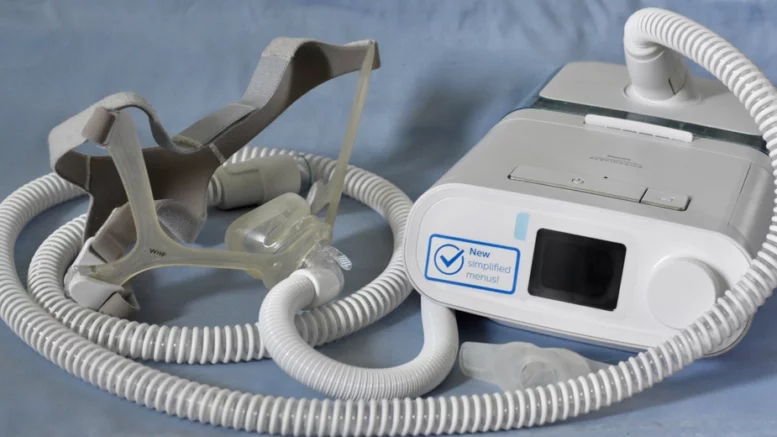There are approximately one billion people who suffer from sleep apnea, ranging in age from 30 to 60. Along with insomnia and restless leg syndrome, this disorder is more common in people who are older or overweight. Now if you are unsure if you have sleep apnea, you should see a sleep physician or search the following question on Google: “Do I Have Sleep Apnea Quiz?”
Sleep apnea is caused by blocked airway, muscle contractions that are not stimulated, or the two factors combined. Most sleep apnea treatment devices and methods require a prescription.
As a result of the type of sleep apnea you suffer from and other health conditions, your healthcare provider will determine which device best treats your disorder. The different forms of sleep apnea and treatment devices are explained here.
Three Types Of Sleep Apnea
An individual with sleep apnea has difficulty breathing during sleep. Sleep apnea symptoms include prolonged breathing pauses that persist after waking up.
Sleep apnea exists in three types:
Obstructive Sleep Apnea (OSA)
Most people with sleep apnea suffer from OSA (Obstructive Sleep Apnea). Obstructive sleep apnea most commonly affects children and adults due to excessive soft palate tissue obstructing the airway. OSA may also be more prevalent in people who do not have their tonsils removed. Some kids also suffer from sleep apnea and so it is a good idea to get your kids tested if you have this issue. For a quick answer you may want to search “Does My Child Have Sleep Apnea Quiz.”
Central Sleep Apnea (CSA)
It is uncommon for the brain to control breathing properly during sleep apnea of this type. In most cases, CSA patients require more advanced treatment options, such as AVAPS BiPAP machines.
Complex Sleep Apnea (CompSAS)
The condition of complex apnea encompasses both OSA and CSA. The diagnosis of CompSAS typically occurs after people attempt to treat OSA with a CPAP and find it ineffective. Diagnosing and treating this form of sleep apnea is particularly challenging. To treat CompSAS, doctors often use medications and advanced BiPAP machines as a combination therapy.
Obstructive sleep apnea isn’t treated with over-the-counter sleep apnea devices in addition to mild breathing and snoring problems. Over-the-counter snoring devices can only be sold as anti-snoring devices, so you’re better off getting a prescription solution, like the MyTAP Oral Appliance, that’s FDA-approved and clinically proven to help. Snoring and OSA are different, so treating your sleep apnea with an anti-snoring device will probably not provide noticeable relief.
Top Five Sleep Apnea Devices And Therapies
You will suffer irreparable damage if you receive ineffective treatment for sleep apnea. Heart disease, stroke, Alzheimer’s, type II diabetes, and other diseases are associated with untreated sleep apnea. The devices listed below, ranked from most effective to least effective, are the best for treating this disorder.
1. CPAP Machine
As the name implies, a Continuous Positive Airway Pressure (referred to as CPAP for short) machine is a device that provides a constant flow of air in your upper respiratory tract. With a CPAP device, your airway remains open and maintains the same pressure throughout the night.
CPAP machines resemble small lunchboxes or stereos and supply air through a tube that is typically six feet long. There are many CPAP masks, but the nose and mouth are generally supplied with air. Many modern CPAP machines have built-in humidifiers to make the constant pressure more bearable.
2. Apap Machine
While CPAP machines are effective in treating OSA, APAP machines provide the lowest pressure possible to open your airway rather than providing a set, constant pressure. At an increased price, most CPAP machines can also be used as APAP machines. The equipment requirements (such as masks and tubing) and maintenance and cleaning requirements between CPAP and APAP machines are similar.
3. Bipap Machine
Positive airway pressure machines that provide two levels of positive airway pressure are called BiPAP machines. The BiPAP machine uses the same tubing and mask as CPAP and APAP machines but has two different pressure settings: inhalation (IPAP) and exhalation (EPAP).

BiPAP machines are typically prescribed when severe breathing disorders require a significant difference between exhalation and inhalation pressures or a higher pressure overall. The minimum pressure setting on BiPAP machines is the same as on CPAP and APAP devices, but the maximum pressure can reach 25 cmH2O, five centimeters higher than either.
4. Oral Appliances
Oral appliances can help you hold your airway open to tolerate air pressure if you suffer from sleep apnea. The two most common forms are:
Tongue Stabilizing Device (TSD)
A Tongue Stabilizing Device (TSD) keeps the tongue from falling back into the airway by shielding and containing it with a vacuum seal.
Mandibular Advancement Device (MAD)
By holding the jaw forward during sleep, mandibular advancement devices prevent the tongue from falling into the airway and blocking it.
Your doctor must write you a prescription to purchase an oral appliance for sleep apnea. You can buy anti-snoring devices over the counter, but they are not rated for treating sleep apnea.
5. Hypoglossal Nerve Stimulation
Sleep apnea can be treated with a Hypoglossal Nerve Stimulator (HGNS), a small implant inside the chest that stimulates the hypoglossal nerve. Sleep apnea symptoms can be decreased using an electrically stimulated hypoglossal nerve stimulator that helps move the tongue forwards and backward.
As you sleep, the nerve stimulator monitors your breathing patterns. It signals the nerves that control your tongue and chest muscles to adjust if it detects an irregularity in your airway while sleeping.
6. EPAP Valves
Small devices are inserted into the nostrils to induce Expiratory Positive Airway Pressure or EPAP. For example, the Bongo Rx EPAP valve creates resistance to exhalation by retaining airway pressure between breaths. EPAP does not require a machine, it does not supply pressure, and it relies solely on your breath to treat sleep apnea.
In addition to being less likely to induce claustrophobic feelings than CPAP, EPAP has also been shown to be an effective long-term solution.
